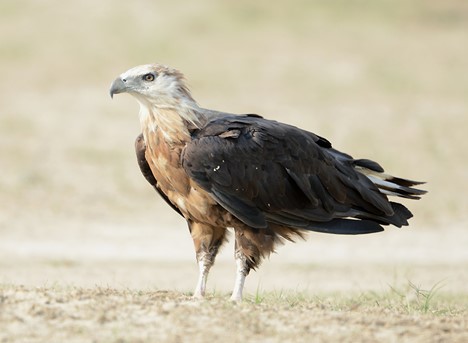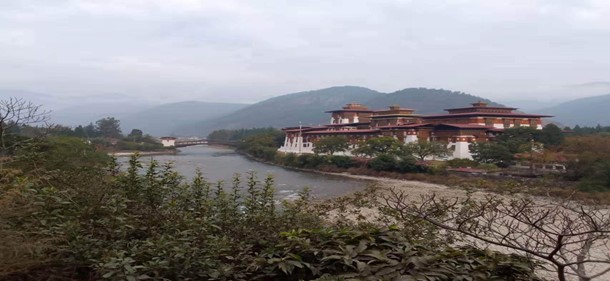By Karma Dorji Jimba
Posted on 19 December 2022.
(Birding Ecotours is financially supporting Karma’s conservation project on Pallas’s Fish Eagle; the company donates 10 % of its profits to projects like this, see here for more details)

Pallas’s Fish Eagle (photo by Koshyk licensed under CC BY 2.0.)
Pallas’s Fish Eagle (Haliaeetus leucoryphus) is closely related to (in the same genus as) American Bald Eagle and African Fish Eagle and is equally attractive with its light brown hood over a white face, dark brown wings, rufous back and black tail with a white stripe. It is an Endangered species as per the IUCN red list assessment carried out by Birdlife International. Previously, this bird was listed as Vulnerable by the IUCN, but more recently its extinction threat has been upgraded to Endangered because there are less than 2,500 individuals left (globally) and this population is declining.
Pallas’s Fish Eagle is found in central, eastern and southern Asia. Its migratory pattern is complex and poorly studied. The species’ small global population is declining as a result of the widespread loss, degradation and disturbance of wetlands and breeding sites throughout its range. Many studies conducted in countries other than Bhutan have found that the population is likely to continue decreasing because of habitat degradation, loss of nesting sites, over-fishing causing a food shortage for the birds and other human-associated factors. The global population is thought to comprise a single, migratory sub-population.
Bhutan forms part of the Eastern Himalaya Biodiversity Hotspot. It is a conservation-oriented country with over 70 % of its surface area still forested. Pallas’s Fish Eagle is listed in Schedule Ⅰ of the Forest and Nature Conservation Rules and Regulations of Bhutan, 2017. Schedule Ⅰ birds are totally protected in Bhutan. It is reported that Pallas’s Fish Eagle is found in four major rivers of Bhutan, namely Punatsangchhu, Mangdechhu, Kurichhu, and Drangmechhu. Most of the population resides within the Punatsangchu River. Birders in Bhutan have mostly recorded the Pallas’s Fish Eagle from this area. The Punatsangchhu River Basin and its periphery is one of the important homes for this species. In Bhutan, sightings of this eagle are most frequent in fall and winter.

Punatsangchhu at Karma Dorji.
Although there are many bird research projects conducted by researchers in Bhutan, Pallas’s Fish Eagle is poorly studied. Few survey-based studies are conducted. Though listed in Schedule Ⅰ of the Forest and Nature Conservation Rules and Regulations of Bhutan, 2017, no dedicated conservation activities are carried out so far. Mostly the studies and conservation efforts are directed towards Critically Endangered birds or based on the funding agencies’ interest. However, due to the stringent conservation policies in Bhutan, many birds are safe from external threats.
Birding is popular in Bhutan. Starting from small school children to retired people, birdwatching is taken up as a hobby. Bhutan has a pristine environment and intact biodiversity. This environment provides many birds a safe habitat and enjoyable birding experience for birding enthusiasts. Bhutan is surely a heavenly abode for birders.
